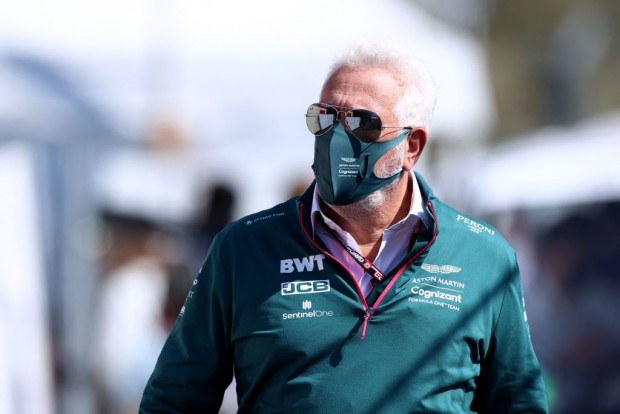Aston Martin F1 Team part-owner Lawrence Stroll walks in the paddock of the Zandvoort circuit before the third free practice session of the Netherlands' Formula One Grand Prix in Zandvoort on September 4, 2021.
(Photo : KENZO TRIBOUILLARD/AFP via Getty Images)
Aston Martin is going all-in with its electrification plans, with the automaker confirming that it will no longer offer combustion-only vehicles by the year 2026. Chairman Lawrence Stroll announced via an interview with the Financial Times that the vehicles they will produce from 2026 onward will be hybrids and fully electric models.
Stroll talked to the publication during the launch of the new DBX707. He said that the company would gradually get to full EV, but they will continue to offer both electric and hybrids as people still want the smell and noise of cars with internal combustion engines.
Aston Martin has already utilized that strategy with the upcoming Valhalla supercar with a 700kW hybrid V8. It is a bespoke version of Mercedes-AMG's longstanding 4.0-liter twin-turbo V8 as the engine has been electrified to the tune of generating 700kW of power and 1000Nm of torque. The electrified V8 is probably based around the engine found in the AMG GT Black Series, as both use a flat-plane crankshaft which rev out to a maximum of 7200rpm.
Valhalla supercar powered by electrified V8
Aston Martin's Valhalla supercar gets a couple of electric motors, one on each axle for the all-wheel drive. These motors produce 157-kW by themselves and combine with the V8 to propel the Valhalla to 100-kph in just 2.5 seconds before reaching a maximum speed of 330-kph.
The electric power of the Valhalla has limitations, with the supercar's range only set for up to 15-km when relying on just the car's electricals. Given the car's limited range, the Valhalla's battery pack is assumed to be relatively small. The automaker said that the CO2 emissions for this vehicle are predicted to be less than 200g/km on the WLTP test cycle.
With its latest creation, Aston Martin expects great things, saying that Valhalla can lap the famed Nurburgring race track in just six minutes and 30 seconds. That is 13 seconds faster than the AMG GT Black Series can do around that circuit. Powering the Valhalla is a new Formula 1-inspired carbon fiber chassis with a pushrod front suspension.
Related Article: Tesla Australia Admits Model 3 Figures Incorrect After Accusations of Company Inflating Sales
Aston Martin goes with a combustion engine for DBX707
Electrification may be the future for Aston Martin, but that does not mean combustion engines are entirely out of the picture for the company at present. The DBX707 that Aston Martin just launched is powered by the same 4.0-liter twin-turbo V8 as the regular DBX.
This machine has no electric motors, but the DBX707 can still produce 520kW and 900Nm thanks to a pair of solid turbochargers and some fine engine tuning. Aston Martin is also planning to launch a plug-in hybrid version of the DBX soon, with the new model expected to arrive around 2024.
READ MORE ON AWN:
GM, Nissan, Kia, BMW, and Toyota to Air Commercials in Super Bowl LVI: See the Teaser Videos Here
Ferrari Daytona SP3 Named Most Beautiful Supercar of the Year; Peugeot 9x8 Gets Hypercar Nod
See Now: OnePlus 6: How Different Will It Be From OnePlus 5?



























